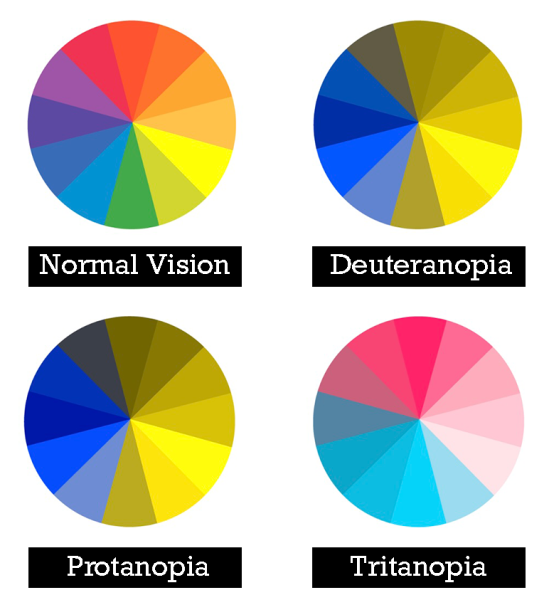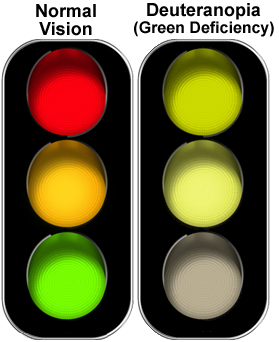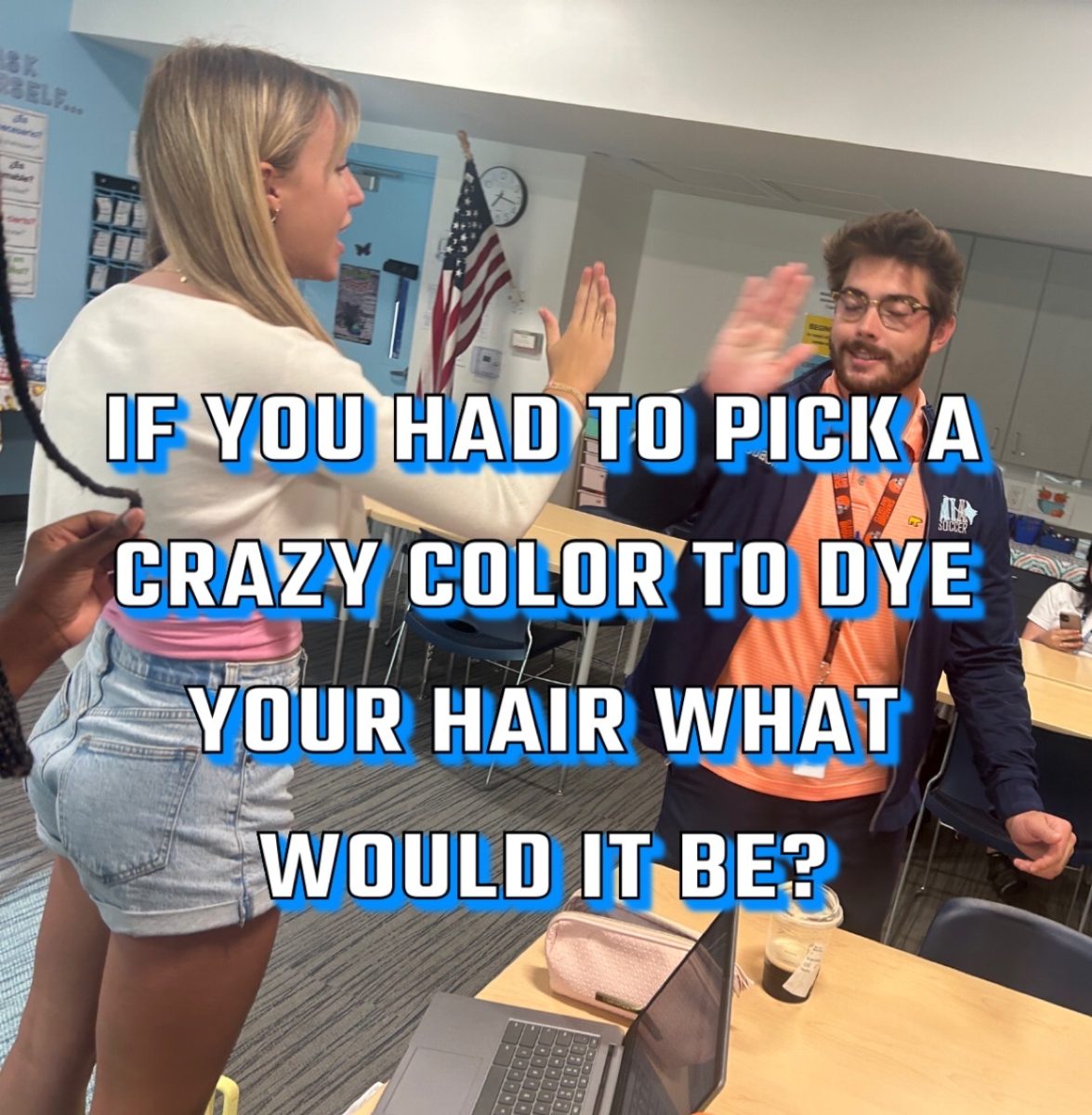Along with 1 in every 12 men and 1 in every 200 women worldwide, I experience the world through the lens of the genetic condition of color blindness. This statistic has fascinated me for years. It both informs me that my troubles deciphering color are common and reminds me that most people see the world as more complex and vibrant at the same time.
The fact the condition is so common yet so fascinating in nature, is what inspires people’s interest in ‘colorblind glasses’. For years, there has been a trend on

social media sites involving heartwarming videos of colorblind individuals ‘seeing the world for the first time’ and crying as they put on their glasses and see colors they’ve never seen.
As someone with deuteranopia color blindness myself, I have always been curious about the validity of these videos and whether or not I could have an experience like that of my own one day. But it wasn’t until recently that I decided to research these ‘magic’ glasses and discuss purchasing a pair. Through my research, I discovered the truth of how the popular treatment works and just how differently color blindness affects each individual.
To those who aren’t colorblind themselves, it can be a confusing condition. Many do not understand how color blindness truly works, and fewer understand how colorblind people may respond to different forms of treatment. Having a deeper understanding of these facets of such a common disorder is critical to combatting public misunderstanding.
What Is Color Blindness?
First, it is helpful to understand color blindness and how it affects people’s vision. Color blindness is a genetic condition that can affect how one perceives color in a variety of ways depending on its form. The condition stems from a mutation in the X chromosome, which is present twice in women (XX) and once in men (XY). This explains why the condition affects men more frequently.
The mutation harms the operation of some or all of the various types of color-detecting cones in our eyes. These cones come in three different types, commonly referred to as short (S), medium (M), and long (L) cones, each corresponding to a different wavelength of light. These cones are individually responsible for receiving colors on the blue, green, and red spectrums, which is the source of the layman’s naming scheme for color blindness. It categorizes individuals based on the colors they may commonly confuse when different types of color blindness share these problems.
The more accurate way to categorize individuals with color blindness is on which of the three types of cones their deficiency affects. Protanopia is the red (L) cones, deuteranopia is the green (M) cones, and tritanopia is the blue (S) cones. A deficiency impacting two or all three of these cone types is generally called ‘total color blindness’ and is exceedingly rare. However, there is a common misconception that all colorblind individuals “can’t see color” because of this misnomer.

This is a crucial distinction to establish because while many may describe both protan and deutan-affected people as ‘red-green colorblind,’ they will react differently to treatments like colorblind glasses and will experience color vision with different nuances. Even within each of these subcategories, symptoms of color deficiency can vary among individuals from mild to severe
What Are Colorblind Glasses?
A viral ‘solution’ for color blindness is color-correcting/filtered lenses. While many have seen videos of the treatment in action, few understand how colorblind glasses work, which factors into their somewhat misleading nature.
Because colorblind people lack proper function in various types of cones in the eye, there is no way to restore the missing color to our vision (or at least, researchers have not discovered one yet). That functionality never returns; wearing filtered lenses factually could not restore one’s ability to see reds, greens, or blues. The key to how colorblind glasses work is in the word “filtered.” These lenses reduce the colors our eyes can see even further by filtering out light in a specifically selected range of wavelengths.
The idea behind this is that the light filtered out by color-correcting lenses rests on the parts of the color spectrum where there is overlap between reds, blues, and greens, whichever the patient has trouble distinguishing between. While this cannot totally restore one’s ability to see the colors of their non-impaired peers, it can enhance their ability to distinguish between colors such as red and green, which individuals with normal color vision can distinguish by default. This gives some colorblind individuals the exciting and accurate experience of noticing parts of the color spectrum in the real world that they wouldn’t have before.
From personal experience, this creates an effect where things you might never have noticed, like flowers in your yard or the shades in foliage, become more noticeable and distinct from one another.
However, the key here is that these glasses can not restore one’s color vision; they only enhance one’s ability to distinguish between colors they commonly confuse. Hence, there is an issue in the viral presentation of color-correcting lenses as a ‘fix’ for color blindness. Presenting color-correcting lenses as a cure for color blindness is a dishonest claim. It spreads a misconception to the general public that filtered lenses can mend color blindness and restore normal color vision to those without it.
Misleading Marketing
In 1998, upon notification of ColorMax’s new color-correcting lenses, the FDA set significant guidelines for marketing the technology. Specifically, ColorMax could not advertise them as a ‘cure for color blindness’ of any kind, and the company must mention that any improvement in color distinction also impairs one’s ability to view other colors. This decision came from the scientific findings at the time that color-correcting lenses provided only marginal improvements to an individual’s ability to distinguish colors they otherwise couldn’t.

The scientific community still supports this conclusion today, even considering newer and more well-known brands of color-correcting lenses, such as EnChroma. One such study, entitled “Effects of color-enhancing glasses on color vision in congenital red-green color deficiencies” (Patterson et al.), even concluded that “…their claim that the technology ‘corrects red-green color deficiency’ is not supported by our data.” This statement is concerning, considering that widespread online discussion surrounding the technology indicates that the general public considers colorblind glasses a solution to the disorder that can completely restore someone’s ability to see color.
The viral marketing technique adopted by most color-correcting lens manufacturers explains this effect. Many popular social media accounts and influencers have published videos of allegedly colorblind individuals trying the glasses and becoming very emotional over their profound impact. Naturally, the viral nature of these videos and the emotional stories they tell are compelling, leading people to believe that the glasses are a miracle treatment. These posts, however, often garner criticism that the creators are embellishing their reactions, a factor deliberately manipulated to create convincing marketing pieces for the glasses companies depicted.
The Importance of Research
As mentioned previously, color blindness does not affect any two people in the same way. Due to differences in which cone of the eye is affected, colorblind individuals can struggle with completely separate parts of the color spectrum from one another. Individuals may experience more severe or mild symptoms even within a particular category, and all of these nuances mean that color-correcting lenses will affect them differently.
While it may be true that studies are conflicted on the effectiveness of color-correcting lenses, they do make a real difference for a lot of people. In some cases, the emotional outbursts you see from people trying them for the first time really are genuinely beautiful moments. Many people report exciting developments in their ability to distinguish reds from greens when trying on their glasses.
The truth is that colorblind glasses are neither a scam nor a cure-all. Color-correcting lenses affect all colorblind people differently depending on the type/severity of their condition, and it can be hard to tell if colorblind glasses would be right for you without having tried them first. Both those who experience color blindness and the public at large need to understand these nuances in filtered-lens technology so that people can research different perspectives themselves and decide whether or not the investment is worth it.
The Perspectives
The best example I could find of what my own experience with colorblind glasses resembled comes from an article from USA Today’s Reviewed product testers. The article by Jonathan Chan explains his and his two brothers’ experience with EnChroma’s colorblind glasses.
He describes that upon trying them on, he noticed an improvement in his ability to distinguish red from green. However, it wasn’t a hugely emotional experience or one that added beauty to his world. He further stated that his brothers, who are also deuteranomaly colorblind, did not experience this change.
To quote his own summary of the experiment, “I experienced a marginal improvement in my color vision. Through these glasses, my world looked more distinct, but not more beautiful. At no point in my time with the EnChromas did I think that they were adding more ‘realness’ to what I was seeing. When I took them off, I didn’t feel like something had gone missing. However, all of our testing and research show that these glasses work as advertised, for those they work for. ”
While my own experience may have been similar to this, many other colorblind individuals report vastly different experiences with trying on the glasses.
John Scalia, the father of one of our school’s English teachers, also has personal experience regarding color-correcting lenses. Being colorblind himself, he reported seeing a “immediate, profound change.”
“I stepped outside and saw a pizza sign, it was the first time that I’d seen such a vibrant red.” He reported being amazed, looking at signs, ambulances, and other red and green objects in a whole new way than he had before.

“It was very surprising. I had doubts, and felt that there was a lot of exaggeration in the advertising, but they absolutely worked.” For Scalia, the treatment was emotional and life-changing. He mentioned that he very frequently wears his glasses, and would recommend giving them a try to any colorblind individual.
He even reported that he has noticed a lingering improvement in his ability to discern whether a color is red or green, even while not wearing the glasses. Lens manufacturers like EnChroma describe this same effect on their website, and many individuals’ experiences back the idea that frequently wearing the glasses, while not able to actually mend one’s eyes, can improve one’s ability to distinguish one part of the spectrum from another.
Craig Tirrell, a local marina property manager, reports a similar success story. “At first I didn’t really see a difference. Apparently it takes a few minutes for your brain to register,” he states. “But once it did, it was amazing.”
He mentioned having the same experience with vibrant reds in everyday objects. “The stop sign on the corner caught my eye first. The reds were so vibrant. I remember commenting that it looked like it was plugged into power, like neon lights.”
When asked about his satisfaction with his purchase, he offered some insight to any who may be considering buying a pair. “I’m very happy with the purchase and still wear them quite a bit, as it brings out all those colors for me. I would recommend them to anyone with a color deficiency, with the caveat that your experience may vary.”
This quote sums up the truth of color-correcting lenses quite succinctly—’ your experience may vary.’ Color blindness treatment, and color blindness as a whole, is an oft-misunderstood phenomenon with a lot of public misconceptions surrounding it that can even be misleading to colorblind people. I think it’s important that more people understand the nuances of the condition and the ways in which color vision varies among those you may meet. Color-correcting lenses are an interesting option for colorblind people everywhere, with benefits and drawbacks to be weighed for each individual.



















